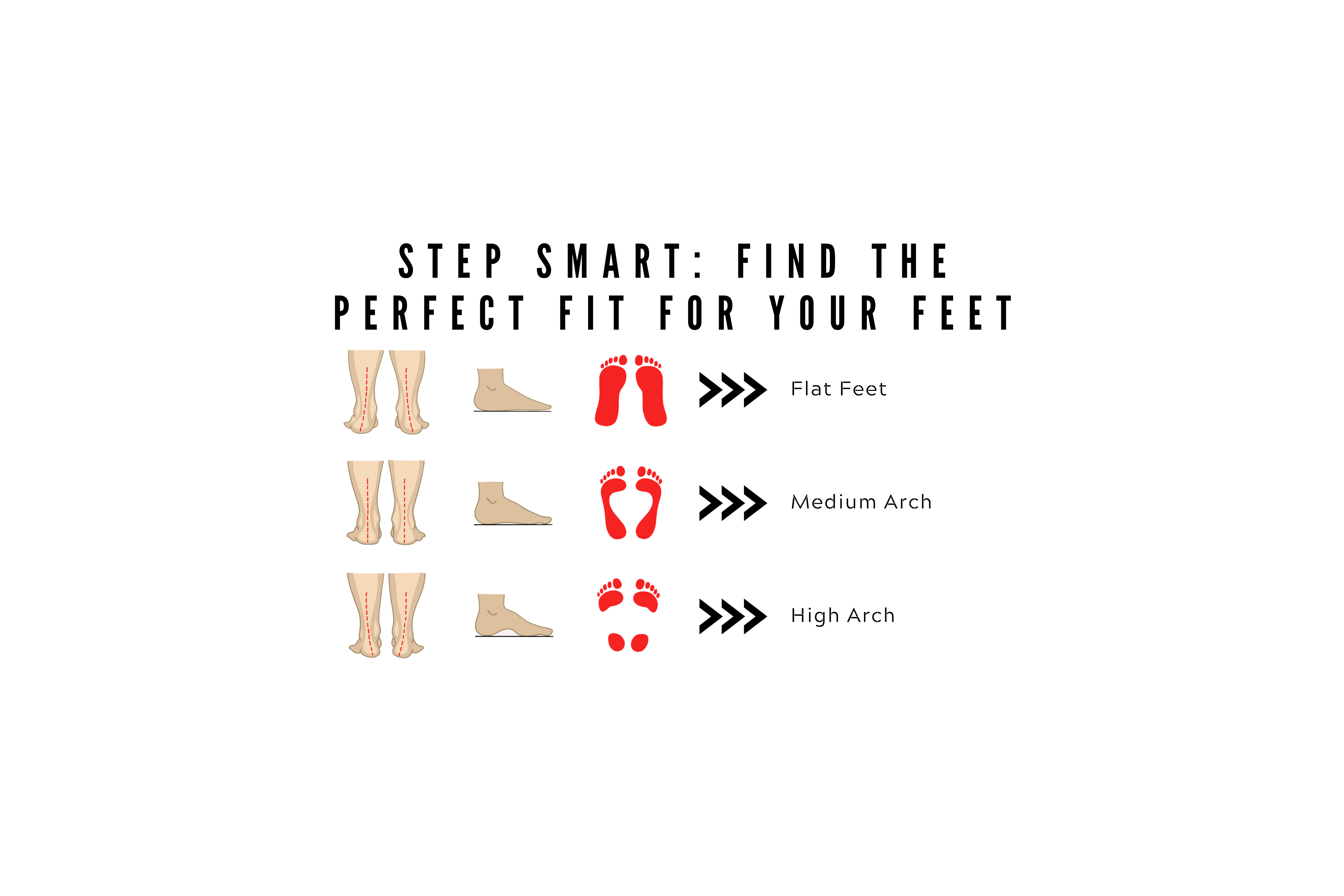Finding the right shoes isn’t just about style—it’s about comfort, support, and preventing foot pain. Whether you have flat feet, high arches, or neutral arches, wearing the right shoes can make all the difference in how you feel throughout the day.
1. Understanding Your Foot Type
Before shopping for shoes, it’s important to determine your foot type. Here’s how:
-
Flat Feet (Low Arch): Your entire foot makes contact with the ground when you step. Flat feet tend to overpronate (roll inward), which can cause pain and discomfort if not properly supported.
-
Neutral Arch: The middle-ground foot type—neither too flat nor too high. Most people fall into this category and can wear a wide range of shoes.
-
High Arch: A noticeable curve in your footprint, meaning less of your foot touches the ground. High arches can lead to under pronation (supination), which puts extra stress on the outer edges of the feet.
2. Shoe Features for Each Foot Type
Now that you know your foot type, let’s explore the key shoe features you should look for:
-
For Flat Feet: Choose shoes with motion control and stability to prevent excessive pronation. A firm midsole and arch support are essential.

-
For Medium Arches: You have more flexibility but should still prioritize shoes with moderate arch support and shock absorption to reduce foot fatigue.

-
For High Arches: Cushioning is key! Look for shock-absorbing insoles and neutral-cushioned shoes to reduce pressure on the balls and heels of your feet.

3. Tips for Finding the Perfect Fit
-
Measure Your Feet: Our feet change over time, so always measure before buying new shoes.
-
Shop in the Afternoon: Feet tend to swell during the day, so try on shoes in the late afternoon for the best fit.
-
Leave Room for Toes: Aim for about a half inch of space between your longest toe and the front of the shoe.
-
Test the Flexibility: Shoes should bend where your foot naturally flexes but still provide adequate support.
-
Check the Heel Support: A firm heel counter (back part of the shoe) helps with stability and alignment.
-
Walk Around: Always walk in the shoes before purchasing to ensure comfort and fit.
4. Common Mistakes to Avoid
-
Wearing the Wrong Size: Sizing can vary between brands, so don’t rely on just one number—try different options.
-
Ignoring Foot Pain: If a shoe feels uncomfortable in the store, it won’t feel better later.
-
Prioritizing Style Over Comfort: Your feet will thank you for choosing function over fashion.
-
Skipping Arch Support: Even neutral arches benefit from proper arch support to avoid future foot problems.
5. When to Replace Your Shoes
-
If the tread is worn out, leading to less grip and stability.
-
If you notice new foot pain, which may indicate loss of support.
-
If the midsole feels too soft or compressed.
-
If the shoe structure is no longer providing necessary support.

By understanding your foot type and selecting the right shoes, you can prevent pain, improve posture, and keep your feet happy!

